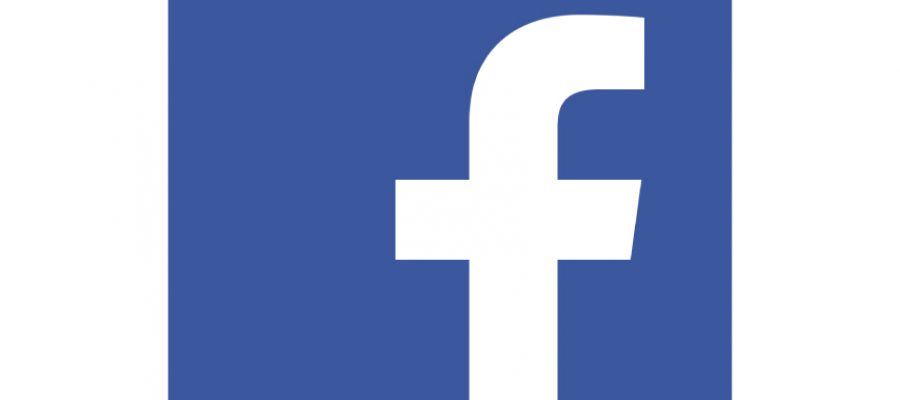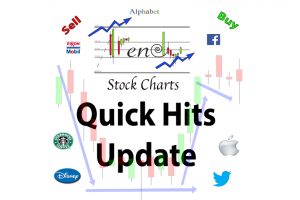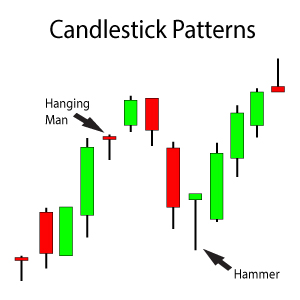There has been a lot of criticism of my Facebook (FB) “retirement holdings” lately, and some of it rightly so.
Facebook (FB) is the “new cigarette” according to some analysts. Other analysts cite the amount of time that people spend on the Facebook (FB) app as a problem with social behavior.
The image from Hagens Berman is a notification I received from them. It identifies a class-action suit that they intend on filing or may even have filed already.
So what affect does all this negative criticism have on Facebook’s stock chart patterns? This article will take a look at Facebook’s stock chart patterns that appear to be developing on its charts. If any chart patterns are identified, I will calculate price targets for the pattern whether it is bullish or bearish.
Facebook’s Stock Chart Patterns (FB)
This first chart is a 20 year monthly candlestick chart. Facebook has not been a public company that long so this chart captures its entire chart history. Its actually a 7 year monthly candlestick chart. FB’s price history as a public company starts in May 2012.
In general, I prefer to use monthly candlestick charts to look for longer-term trends for share prices.
This chart shows a Trading Channel that I have been monitoring. I first discussed FB’s share price breaking out of its Trading Channel in this previous article “Quick Hits 9/1/2016 – Monthly Candlestick Chart Review“.
After breaking out of the Trading Channel in September 2016, FB’s share price has pulled back and retested the upper trendline from the Trading Channel. It appears that all the negativity in the last few months was exactly what FB’s share price needed for the pullback.
Other 3 Year Trading Channel Breakouts
For some of the “original” Trendy Stock Chart members, they may remember my website’s very first article. The article was for 3D Systems (DDD). I talked about an upside breakout from a 3 year channel and significant gains ahead. It was a perfect way to start off the website by nailing that call. DDD went on to more then double in the next couple of months.
Another 3 year channel breakout was for Apple (AAPL). That breakout for Apple (AAPL) also lead to more than a double in a very short period. Matter of fact, I used the 3D Systems Trading Channel breakout as a blueprint for Apple’s breakout with great success.
Unfortunately, neither of those 2 previous article are available for reference. When I switched web host providers in October 2016, I lost all history from the prior 3.5 years. I still have the old data saved and someday hope to have it restored so all Trendy Stock Chart articles are available. I’ve made some great calls in the past I would like to reference again.
So now that Facebook’s share price has re-tested the breakout, what could be some upside target prices? Let’s calculate some next.
Long-Term Upside Price Targets
On the first chart above, I placed a Fibonacci Extension Tool on FB’s breakout from and pullback to the top of the Trading Channel. As most Trendy Stock Chart members know, the Fibonacci Extension Tool is one of my favorite tools for calculating price moves.
While the [s2If !current_user_can(access_s2member_level1)]…….
If you want to continue reading this article about Facebook’s stock chart patterns, you must first login.
I look at some pullback areas to begin building a position in the stock. Long-term upside price targets are also calculated for Facebook’s (FB) share price.
If you are not a Trendy Stock Charts member, consider joining today! There are several different subscription plans available.[/s2If][s2If current_user_can(access_s2member_level1)]100% Target Line is one of the price targets, the 161.8% Target Line would be the most probable upside price target for the next leg of FB’s breakout. The 161.8% Target Line is also called the Golden Ratio. I discuss the Golden Ratio in more detail on the Fibonacci pages of the site.
Shorter-Term Upside Price Targets
I posted a chart in the Idea Chamber recently that seemed to confirm my previous $209 price target. Since that post, I’ve revised my shorter-term outlook according to this Elliott wave breakdown. It shows a probable Bullish Impulse wave pattern that is under development.
The 2 gray shaded boxes represent the general price areas for the remaining 2 waves of Facebook’s probable Bullish Impulse wave pattern. The two remaining waves would be Wave 4 and Wave 5. If labeled correctly, Facebook would currently be in Wave 4, a counter-trend wave.
A counter-trend wave like Wave 4 represents a “short-term” pullback in the overall uptrend. Wave 5 would represent the top of Facebook’s current uptrend. After completing Wave 5 it would be time for a consolidation period. I discuss different consolidation patterns on the Advanced Elliott Wave page.
If Waves 4 & 5 develop as expected, it would end up developing an Inverse Head & Shoulders chart pattern. An Inverse Head & Shoulders chart pattern is a pattern that would lead to a bullish breakout. It could possibly be viewed as a Cup Pattern also, depending upon how far Wave 4 dips down during its development. The further the dip, the more likely it would be considered an Inverse Head & Shoulders chart pattern.
Possible Bearish Price Action
Most times, there is the possibility of both a bullish and bearish outcome. Being able to determine the more probable outcome is what leads to successful stock picking. While the probability of Facebook’s price action seems more bullish than bearish, let’s review the possible bearish outcome.
Let’s start by re-looking at the 1 year daily candlestick chart. I placed a Fibonacci Extension Tool on the chart to calculate some downside price targets. I colored the Fibonacci Extension Tool red as to indicate bearishness. The placement of this Fibonacci Extension Tool assumes that FB does not break back above its all-time high of $195.32. The 3 downside price target areas would be the 61.8%, 100% and 161.8% Target Lines.
On the very first 20 year monthly candlestick chart I made mention on the chart that any pullback into the gray shaded box would represent a buying opportunity for the longer-term. The gray shaded box on that first chart is in the $145 – $158 range which I placed without any help from the Fibonacci trading tools. If FB’s share price were to reach the gray shaded box on the monthly chart, it would develop a Zig-Zag wave pattern.
The red 100% Target Line on this 1 year daily candlestick chart seems to confirm the lower end of that price range at $142.02.
Monitoring the Possible Bearish Scenario
The question here is this – how do I monitor Facebook’s chart to see if the bearish scenario is playing out? One clue would be the MACD Histogram on its monthly candlestick chart. If a Zig-Zag wave pattern is developing towards the $142ish range, then the MACD Histogram should indicate it. The MACD Histogram on the monthly chart should switch from decreasing selling momentum to selling momentum that is increasing again. Any continued push upwards should not make a new an all-time high, Instead, its downtrend should resume with increasing selling momentum and volume.
Another clue would be during be if during FB’s current consolidation its share price breaks below the top of Wave 1, that could be a possible earlier indication. The top of Wave 1 from the above Elliott wave breakdown is $169. That means if FB’s share price prints a $168.99 during its current consolidation, a longer consolidation period could be developing. I say “could be” because as I mentioned before, almost every scenario has a bullish and bearish way it can play out.
The most important item to monitor at the time of a break would be the volume for the stock. Did the break occur on selling volume that has been decreasing? Or did the break develop on selling volume that is increasing? The latter of the 2 almost assures a longer consolidation period is in place.
The last clue would be general market weakness. If the overall market starts to crap out in the next few weeks, FB most likely will too.
Summary of Facebook’s Stock Chart Patterns
Before I wrap up this article on Facebook’s stock chart patterns, let’s take a peek at the price targets from its Point & Figure Charts.
High/Low P&F Chart – $201 Bullish Price Objective
Closing P&F Chart – $239 Bullish Price Objective
Both of the P&F Charts indicate higher prices for Facebook. Always a positive confirmation to the other analysis that has been performed.
Summary of Facebook’s Stock Chart Patterns
While there has been a plethora of negative news for Facebook over the last couple months, its share price sits less than 5% from its all-time high. I think all of the recent negativity caused any borderline FB investors to bail on the stock and sell their shares. I even called FB’s all-time high on its earnings and subsequent sell-off. I just didn’t realize the extent of the sell-off at the time.
But this pullback and subsequent rebound seem to be setting up for something more. The bullish chart items seem to outweigh the bearish news for Facebook. A $281 price target from the 161.8% Target Line on the very first chart could be just the start of FB’s breakout from its 3 year Trading Channel. The $281 would be an approximate 50% gain from its current share price. That would be very bullish and would start with another great earnings beat next quarter.
If you are not long already then any pullback to the $170 – $180 price range before reaching the Wave 5 price target area should be seen as a buying opportunity. Before just purchasing shares, make sure there is light selling volume.
I plan on continuing to stay long with my FB shares which I consider my “retirement holdings”. With quarterly earnings that continue to beat analyst estimates recently, there is no reason for me to settle for a subpar retirement. Matter of fact, if the breakout from the 3 year Trading Channel goes as planned, my “retirement” may arrive a little earlier than anticipated.
In my opinion, FB’s upside potential seems to outweigh the downside risks right now. Worst case scenario, I have to sit through another push down to the $140 price level with the development of a Zig-Zag wave pattern. While the Fibonacci Extension Tool would have to be adjusted for the new low from the Zig-Zag, the overall upside price targets should not be too much different. Sometimes the risk of huge upside potential comes with the risk of sitting first through a pullback if you are early to the trade. Better early than late in my opinion.
Don’t worry though, the early retirement I mentioned is just from my consulting job. I will continue writing articles for Trendy Stock Charts!
Continue to reference this analysis for the bullish and bearish scenarios to see which is playing out. If you are unsure of anything, ask a question below, stop by the Idea Chamber or even send me an email with your question. I will be happy to provide an update of this analysis upon request…
Good luck trading!
[/s2If]


















2 Comments
Leave your reply.